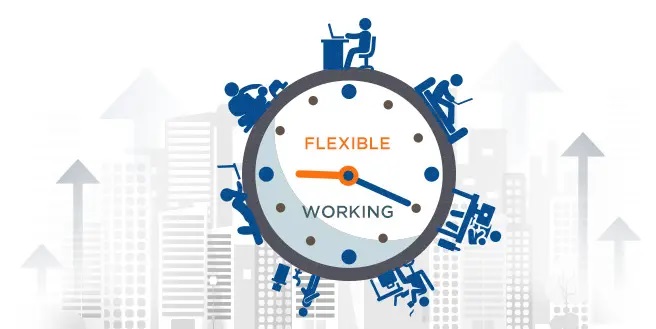Enjoying Change: The Strength of Agile in addition to Flexible Working throughout Modern Business

In today's busy business landscape, the ability to adapt and respond to change is considerably more crucial than in the past. Firms are increasingly recognizing that agile and versatile working models are generally not just trends; they will represent an essential shift in exactly how we approach work. These methodologies allow organizations to revolves quickly in response to industry demands, while also promoting a tradition where employees could thrive and improve. As we get deeper, we'll explore what agile and versatile working truly nasty, their myriad positive aspects, and how companies can effectively apply these strategies.
The innovating nature of function has brought up a new era exactly where traditional boundaries in addition to structures are staying redefined. Embracing flexibility and flexibility enables organizations to funnel the full potential of the workforce, cultivating an environment conducive to be able to collaboration, creativity, and continuous learning. Using technology playing a new pivotal role found in this transformation, the particular opportunities available for boosting employee well-being, generating productivity, and bringing in top talent will be immense. Join us while we navigate due to the fundamental aspects involving agile and flexible doing work, providing insights and even actionable strategies that can lead your organization toward success in the present00 business world.
Key Rewards of Agile plus Flexible Working
Agile and versatile working arrangements present significant advantages for both employees and employers. For staff, flexibility at work hrs and location often leads to superior work-life balance, allowing them to better manage personal obligations alongside their specialist responsibilities. This increased autonomy can reduce stress and enhance overall job satisfaction, thereby fostering some sort of more engaged plus motivated workforce. While a result, employees feel empowered in order to perform at their very own best, which can easily result in higher efficiency and creativity.
From the employer's perspective, enjoying agile and flexible do the job models can result in considerable financial benefits. https://dataromas.com/boosting-efficiency-strategies-for-enhancing-office-productivit/ can reduce overhead costs related to bodily office spaces, whilst also attracting in addition to retaining top ability who value work-life balance and versatility. A flexible operating culture enhances employee retention, lowering return rates and related recruitment costs. Furthermore, businesses that apply agile practices frequently find that personnel are definitely more responsive to be able to change and development, enabling them to stay competitive in quickly evolving markets.

In addition to individual and organizational positive aspects, agile and flexible working fosters collaboration plus innovation across clubs. By encouraging start communication and flexibility, agencies can harness varied perspectives and suggestions, leading to a lot more creative solutions. Agile practices promote iterative processes and continuous learning, essential components for thriving on today's fast-paced enterprise landscape. Overall, the shift toward acuto and flexible operating is not just beneficial although crucial for promoting a resilient and even future-ready workforce.
Strategies regarding Implementing Agile Function Environments
To successfully carry out agile work surroundings, organizations need to foster a culture that will embraces flexibility and even adaptability. This starts out with leadership actively promoting an souple mindset, where affiliates are encouraged to take ownership of their very own tasks and pioneer without anxiety about disappointment. Regular workshops or perhaps training sessions can assist employees understand agile principles and precisely how to apply these people effectively in their daily work. Emphasizing open up communication and collaboration will further reinforce this culture, allowing teams to talk about concepts and feedback freely.
Adopting the right equipment and technologies is essential for creating a great agile workspace. Businesses should invest inside project management software that will facilitates real-time venture and enables openness in workflows. Tools like Kanban planks or Scrum methodologies can help teams prioritize their tasks and adapt to be able to changing project needs efficiently. Additionally, providing a remote-friendly facilities ensures that all team members could stay connected and engaged, regardless associated with their physical place.
Lastly, it is essential to regularly determine and iterate about the agile techniques being implemented. Get together feedback from staff about their experiences and challenges can provide valuable insights directly into how processes may be improved. Conducting retrospective meetings helps groups reflect on their particular achievements and setbacks, fostering a development mindset that may be fundamental to agility. Simply by continuously refining these kinds of strategies, organizations may build resilient teams that thrive inside dynamic business environments.
Upcoming Trends in Adaptable Work Models
As businesses continue to evolve, the landscape regarding flexible work versions is expected to transform significantly. Companies are increasingly knowing the advantages of hybrid function arrangements that mix remote and in-office collaboration. This craze enables companies in order to leverage the benefits of in-person crew dynamics while keeping the flexibility that personnel desire. Companies that adopt this magic size will likely purchase tools and systems that facilitate smooth communication, ensuring that both remote plus in-office employees can easily collaborate effectively.
Another notable trend is typically the rise of individualized flexible working choices. Rather than the one-size-fits-all approach, business employers are beginning in order to tailor work plans to individual staff preferences and needs and wants. This could contain choices around core working hours, remote control work days, or even customized roles that align with personal strengths. This move towards personalization not merely enhances employee pleasure but also promotes a sense of ownership and accountability within groups, ultimately driving higher engagement levels.
Lastly, typically the future of versatile work will in addition see an emphasis on well-being and even mental health. Firms are increasingly aware about the impact of which work arrangements have got on employee health and wellness, leading to even more supportive policies and practices. Initiatives like mental health days, wellness programs, and even resources for universal remote workers are becoming standard. By putting first employee well-being, businesses can foster some sort of healthier work tradition, enhancing productivity and retention in a more and more competitive job market.
